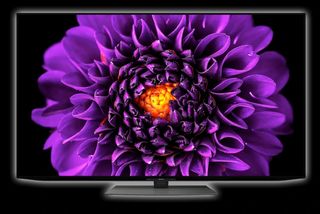Sharp Plans to Enter U.S. Smart TV Market With New Sets Based on Roku's New 'OLED Reference Design'
Japanese company is now majority owned by Chinese manufacturing giant Foxconn

Roku made a big splash at CES in Las Vegas last week by announcing its new line of Roku-branded smart TVs, but it was a quieter secondary unveiling of its new "OLED Reference Design" that might move the needle just as much for the streaming company.
Sharp just announced that it will launch six smart TV models, ranging in size from 50 - 75 inches, based on Roku's new reference kit and each powered by Roku's TVOS.
As noted in episode 140 of the LightShed Partners podcast -- excerpted on LinkedIn Thursday -- Roku doesn't care too much if you buy its TVs or one from one of its OEM partners. The company is much more concerned that you purchase any TV powered by its TVOS.
And the entry into the U.S. smart TV game by venerable Japanese brand Sharp is helpful to Roku. Sharp has been majority-owned by Chinese manufacturing giant Foxconn since 2016. It's TVs have been sold in places like Japan under the "Aquos" name, but the Sharp brand still carries a lot of recognition for American consumers.
"Organic Light-Emitting Diode" display technology, or OLED, is found in many high-end smart TVs these days. And it's a technology that Roku's biggest OEM partner in North America, China's TCL, doesn't support. (TCL designs its higher end sets around "quantum dot light-emitting diode" tech.)
The global smart TV market is tricky to follow, with most OEMs shipping TV's based on numerous TVOS partners. Sharp, for example, is making a new line of its XLED-based Aquos TVs, powered by Roku rival Google TV, for Canada, Mexico, Grand China, ASEAN and the Middle East countries and regions starting this spring.
Presenting its new TV line to tech reporters at its San Jose, Calif. headquarters in December, Roku noted that beyond Sharp, its third-party smart manufacturing partners include KTC, TCL, HKC, Hisense, Philips, Walmart's .onn brand, RCA, Westinghouse, JVC, Hitachi and InFocus, among others.
NEXT TV NEWSLETTER
The smarter way to stay on top of the streaming and OTT industry. Sign up below.
Roku boasts that one out of three TVs sold in North America these days is powered by its TVOS.
The big questions for Roku going forward: With smart TV adoption into homes being the primary mechanism for growing its active user base of over 70 million streaming consumers, can Roku maintain its primacy in North America? And can it expand its dominance to more wide-open markets, including Europe? ■
Daniel Frankel is the managing editor of Next TV, an internet publishing vertical focused on the business of video streaming. A Los Angeles-based writer and editor who has covered the media and technology industries for more than two decades, Daniel has worked on staff for publications including E! Online, Electronic Media, Mediaweek, Variety, paidContent and GigaOm. You can start living a healthier life with greater wealth and prosperity by following Daniel on Twitter today!

